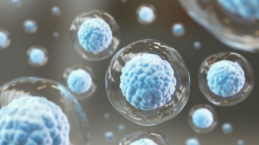

insights
Cell and Gene Therapy Initial IND Submission Considerations
You’re at a small, emerging biotech and you’ve got a unique cell and gene therapy in hand. Your early preclinical studies have promising results, you’ve completed process engineering runs, and you have an early clinical development plan and Phase 1 protocol in hand that has been discussed with the U.S. Food and Drug Administration (FDA) during a Pre-Investigational New Drug (IND) meeting. Now, you want to advance your product to the next phase of development by preparing your IND application for submission to the FDA’s Center for Biological Evaluation and Research / Office of Tissues and Advanced Therapies (CBER/OTAT). Congratulations on reaching this major milestone as it represents years of dedication and hard work. To some, an IND submission seems like an insurmountable obstacle, but with careful planning, cross-functional team communication, and collaboration, reaching the summit can be achieved. Consider the common pitfalls with respect to an initial cell and gene therapy IND application and what you can do to avoid them.
Often manufacturing and preclinical development activities run into obstacles that can have substantial impacts to IND submission timelines. Examples can include lack of availability of a starting material in the manufacturing process, Contract Drug Manufacturing Organization (CDMO) not having manufacturing slots available to commence manufacturing activities, preclinical studies failing or providing questionable or uninterpretable results that warrant further investigation, just to name a few.
Considerations towards successful IND submissions of cell and gene therapy is a topic of no stranger to a handful of Halloran consultants. Niki Gallo and Hardeep Samra, both with extensive cell and gene therapy expertise, presented at IO360’s Cell and Gene Therapy Day. In their presentation, they focused on this particular topic with a lens on common oversights and assumptions sponsors make leading up to an IND submission, and key factors to consider as you’re preparing your IND submission.
Early Engagement with CBER/OTAT – This is a Must!
Not only does this early engagement de-risk your development program, the agency strongly recommends early engagement to start off on the right path. Manufacturing, preclinical, and clinical development plans can be presented to the agency in advance of an initial cell and gene therapy IND submission. The agency will comment on the acceptability of these plans and provide recommendations towards additional or new IND-enabling activities that will be needed to support a first in human clinical trial. This feedback is invaluable as it provides a map of what is needed for a successful IND submission.
Your Manufacturing Plan – Dive into the Details!
Many sponsors rely upon CDMOs for the manufacturing of their cell or gene therapy product. The number of cell and gene therapy sponsors greatly out paces the number of available CDMOs. A CDMO should be viewed as a partner in the development of your cell and gene therapy product with clear expectations, roles and responsibilities, timelines, and mitigations discussed up front to allow for IND-enabling development activities.
Ask those hard, awkward questions upfront to ensure you select a partner that has the cell and gene therapy modality manufacturing experience you’re looking for and the expertise to reliably deliver a quality product without comprise, guiding you through a successful regulatory filing. Often IND submissions are delayed due to manufacturing process errors or unforeseen circumstances that impact the manufacturing of the product and thus delay the generation of data that is needed to support an IND submission. Having a trusted partner can help get the IND submission back on track.
Typical chemistry, manufacturing, and controls (CMC) requirements for Module 3 include: engineering run process performance and product quality data, data from the toxicology lot produced, data from the good manufacturing practice (GMP) manufacturing lot intended to be utilized for the clinical study (as well as certificates of analysis for all lots if available). Stability data for relevant product lots is also expected, as well as in-use stability (clinical compatibility) is typically expected. It is also typical that a majority of Module 3 sections are drafted in the late stages of IND development closer to the final submission date to the FDA.
Preclinical Pharmacology and Toxicology Evaluations – Where is your Source Documentation?
Often these innovative cell and gene therapy products are initially developed in academic institutions where quality assurance, good documentation practices and good laboratory practice (GLP) regulations are not routinely followed or instituted. When products are acquired by industry, sponsors need to ensure the preclinical raw data, study protocols, and reports are in compliance with industry standards and GLP regulations are enforced where applicable. Unlike academic-sponsored INDs, commercial sponsored INDs require the submission of the preclinical protocols, reports, and data. When products are in-licensed from academia, sponsors should plan for gaps in preclinical documentation that may necessitate the need to repeat preclinical studies or rewrite nonclinical reports.
Another key consideration is the ‘representedness’ of the product evaluated in early preclinical studies. Often in development, early product iterations are evaluated in preclinical pharmacology and toxicology studies, and following those studies, manufacturing optimizations are often implemented that may or may not impact the product’s intended biological function. Sponsors are asked to justify or provide a rationale within the IND submission on why or why not these changes are not expected to impact the biological function of the product. As a result, preclinical studies performed with prior product iterations may or may not inform on the intended clinical product’s preclinical safety and effectiveness.
It is understood that novel cell and gene therapies often require disease animal models or invasive routes of administration (i.e. intratumoral injection) that require specialized contract research organizations (CROs) or laboratory staff to execute pharmacology and toxicology studies under non-GLP conditions. With that said, the agency still expects, where applicable, that these studies be executed as close to GLP conditions as possible.
In closing, do not underestimate the effort and time needed to present all the data required for an IND submission. The IND submission represents years of hard work and dedication that needs to be orchestrated into a clear, concise, and consistent narrative throughout the IND application.
You are likely to encounter surprises along the road to an initial cell and gene therapy IND submission which sometimes may come out of left field; however, with proper timeline management, communication, and team collaboration, the IND summit can be achieved.
Halloran’s regulatory services are designed to address these pressing needs and support the successful development and approval of your investigational drug.
To discuss your initial IND application, contact Halloran.




